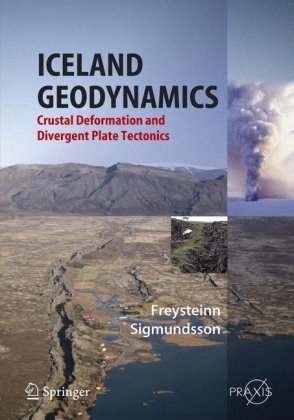

Most ebook files are in PDF format, so you can easily read them using various software such as Foxit Reader or directly on the Google Chrome browser.
Some ebook files are released by publishers in other formats such as .awz, .mobi, .epub, .fb2, etc. You may need to install specific software to read these formats on mobile/PC, such as Calibre.
Please read the tutorial at this link: https://ebookbell.com/faq
We offer FREE conversion to the popular formats you request; however, this may take some time. Therefore, right after payment, please email us, and we will try to provide the service as quickly as possible.
For some exceptional file formats or broken links (if any), please refrain from opening any disputes. Instead, email us first, and we will try to assist within a maximum of 6 hours.
EbookBell Team

4.0
6 reviews
ISBN 10: 3540241655
ISBN 13: 9783540241652
Author: Freysteinn Sigmundsson
Chapter 1: Introduction
1.1 Iceland's Unique Tectonic Setting
1.2 A Natural Laboratory for Plate Tectonics
1.3 The Role of the Iceland Mantle Plume
1.4 Geodynamic Observatories and Data
1.5 Structure of the Book
Chapter 2: Plate Tectonic and Geological Framework
2.1 Mid-Atlantic Ridge and Divergent Plate Boundaries
2.2 The North Atlantic Igneous Province
2.3 The Tjornes Fracture Zone and South Iceland Seismic Zone
2.4 Active Volcanic Zones and Rift Segments
2.5 Plate Kinematics and Spreading Rates
Chapter 3: Mantle Plume - Mid-Ocean Ridge Interaction
3.1 The Concept of a Mantle Plume
3.2 Evidence for the Iceland Plume
3.2.1 Geochemical Signatures
3.2.2 Seismic Tomography
3.3 Plume-Ridge Interaction and its Influence on Magmatism
3.4 Melt Generation and Accumulation beneath Iceland
Chapter 4: Crustal Structure of Iceland
4.1 Seismic Imaging of the Crust and Upper Mantle
4.2 Crustal Thickness and Composition
4.3 Magmatic Intrusions and Seismically Active Structures
4.4 The Role of Magma Reservoirs and Shallow Magma Chambers
4.5 Geothermal Systems and Their Relationship to Crustal Structure
Chapter 5: Crustal Deformation and the Spreading Cycle
5.1 Geodetic Techniques for Measuring Deformation
5.1.1 GPS (Global Positioning System)
5.1.2 InSAR (Interferometric Synthetic Aperture Radar)
5.2 Inter-seismic and Co-seismic Deformation
5.3 The Spreading Cycle in Rift Zones
5.3.1 Magma Accretion Events
5.3.2 Rifting Episodes and Fissure Swarms
5.4 Aseismic and Transient Deformation
Chapter 6: Volcano Dynamics and Unrest
6.1 Monitoring Volcanic Systems
6.1.1 Seismicity and Tremor
6.1.2 Gas Emissions
6.1.3 Ground Deformation
6.2 Dynamics of Magma Intrusion and Dyke Propagation
6.3 Caldera Collapse and Inflation Cycles
6.4 Case Studies of Volcanic Eruptions (e.g., Eyjafjallajökull, Bárðarbunga)
Chapter 7: Seismicity and Faulting
7.1 Seismotectonic Regimes of Iceland
7.2 Earthquake Mechanisms and Faulting Styles
7.2.1 Normal Faulting in Rift Zones
7.2.2 "Bookshelf Faulting" in Transform Zones
7.3 Microseismicity and Seismic Swarms
7.4 Tectonic Triggering and Stress Transfer
Chapter 8: Glacial Isostasy and Vertical Movements
8.1 The Effects of Glacial Unloading
8.2 Post-Glacial Rebound and Uplift Rates
8.3 The Link between Ice Mass Changes and Volcanic Activity
8.4 Sea Level Change and its Geodynamic Implications
Chapter 9: The Icelandic Geodynamic Outlook
9.1 The Future of Crustal Deformation Studies in Iceland
9.2 Integrating Geodetic, Seismic, and Volcanic Data
9.3 Societal Implications: Hazard Assessment and Mitigation
9.4 A Glimpse into the Future of the Mid-Atlantic Ridge
iceland geologic activity
iceland geologic map
iceland geology
iceland geology map
iceland crust
Tags: Freysteinn Sigmundsson, Iceland, Geodynamics